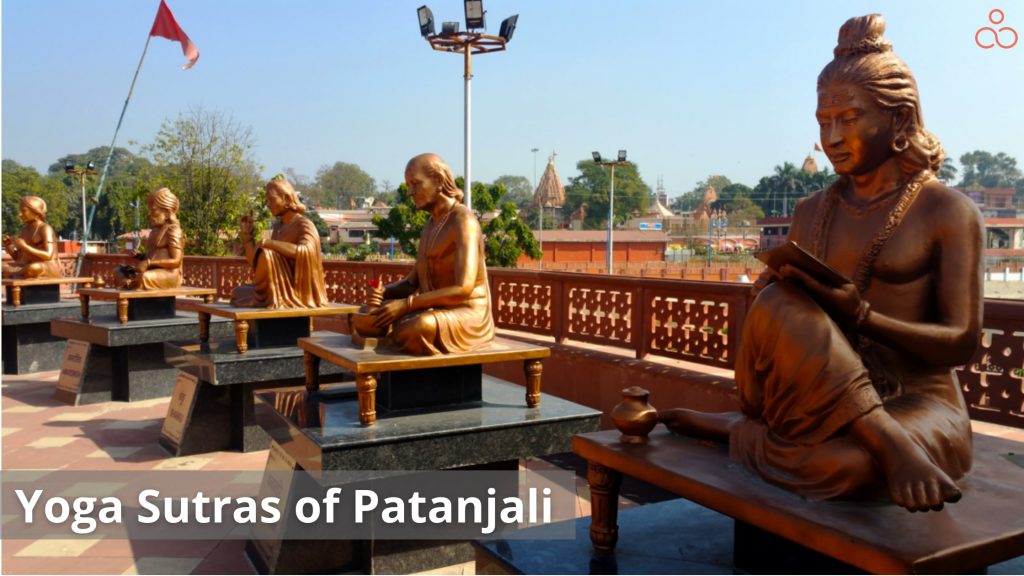“We won’t be able to alter the entire world, but we can alter ourselves and fly like birds. We can be calm even in the midst of disasters, and by doing so, we may help others to be calm as well. Serenity spreads like a virus. When we grin at someone, he or she will return the smile. A smile, on the other hand, is free. We should inflict joy on everyone. Why not die happy and laughing if we just have a minute to live? ” (136-137) The Yoga Sutras, Swami Satchidananda
Many people refer to the ‘Yoga Sutras’ without knowing where they came from. The question of “who wrote the yoga sutra?” has sparked significant debate, with the conclusion still out. This collection of 195 sutras or words of wisdom, is said to be compiled by the revered ancient sage Patanjali, is the foundation of classical or raja yoga.
Yoga is the integration of body, mind, spirit, and soul in its purest form. According to Yoga, we struggle from the delusion of separation between our own awareness and Universal Consciousness, or Brahman. The Yoga Sutras provide practical guidance to remembering that oneness on your spiritual journey.
Yoga encompasses far more than just asanas. Even when life gets wild, the sutras teach us how to be our genuine selves and embrace every moment.
The Story Of Patanjali – The Mythical Version
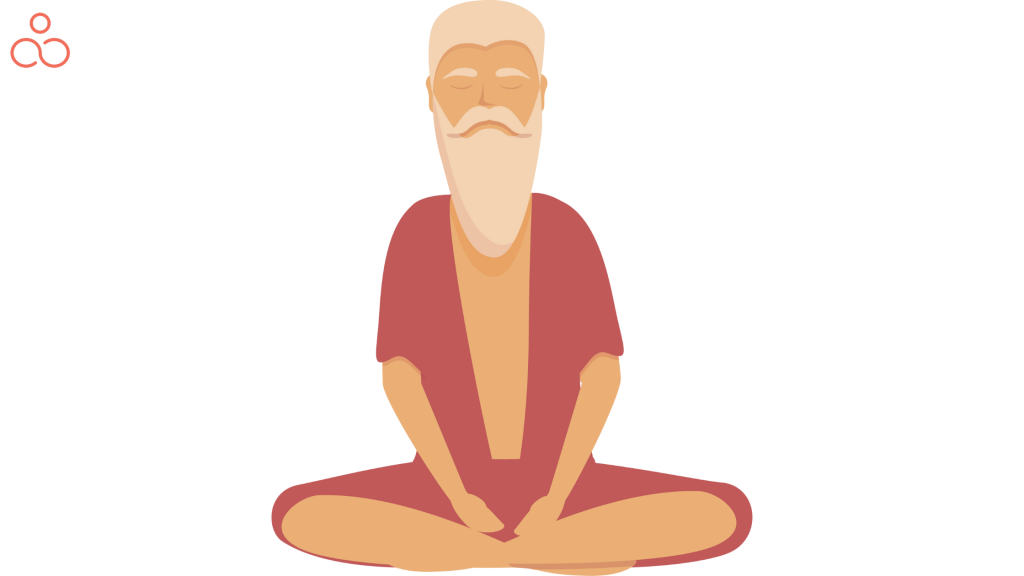
Once upon a time, all the Munis and Acharyas came to Lord Vishnu to tell him that even though He (incarnated as Lord Dhanvanthari) had provided them with the skills to treat illnesses through Ayurveda, people continued to be ill.
They began to wonder what to do if someone became ill. It’s not always just a physical illness that has to be addressed; sometimes, it’s also a mental and emotional illness. How can one purge impurities such as wrath, desire, greed, and envy from one’s life? What is the formula for success?
Lord Vishnu was resting on his snake-infested bed, which included the 1000-headed serpent Adishésha. When the Sadhus addressed Him, He gave them Adishésha (the symbol of awareness), who became Maharishi Patanjali and lived in the world. As a result, Patanjali came to this world to impart yoga knowledge, which became known as the Yoga Sutras. The Puranas do not explain; it is up to us to figure out what the hidden meaning is.
Story Of Patanjali – A Theoretical Version
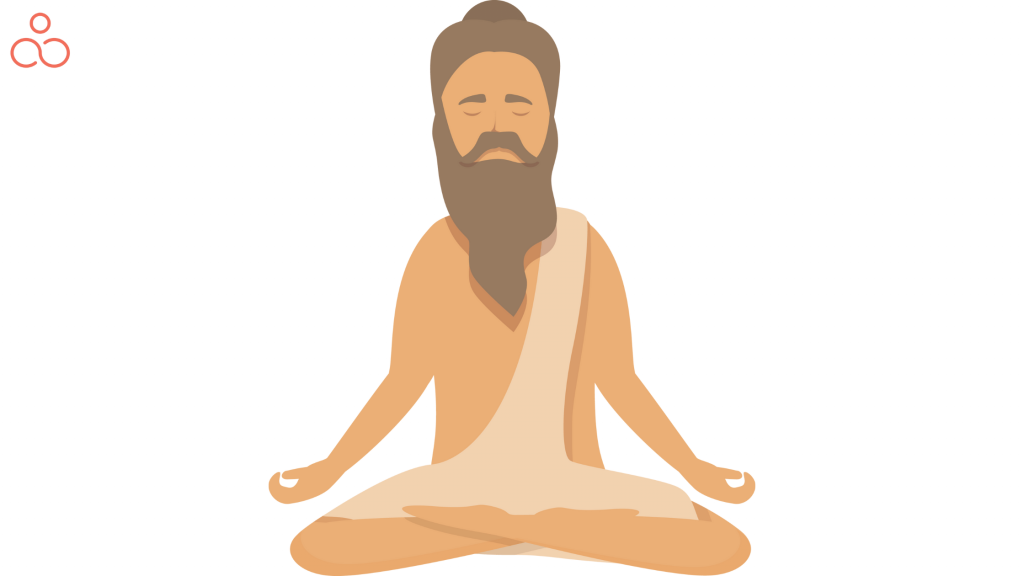
We don’t have a lot of information on Patanjali himself. His life is thought to have taken place during the first and fourth centuries of the Common Era.
He penned the sutras in a style known as “Buddhist Hybrid Sanskrit,” rather than traditional Sanskrit, indicating a Buddhist presence. The Yoga Sutras’ author was most likely not a half-man, half-multi-headed serpent.
That was a different Patanjali, a legendary god; yet, the two have been confused at times, such as in the Iyengar and Ashtanga practices’ beginning invocations.
According to the history of the work, many of our understandings of the Yoga Sutras have been filtered through multiple commentators on the original verses.
The Yoga Sutras, written approximately 2,000 years ago, are considered one of the most important yogic writings. It’s possible you’ve seen it on your local studio’s bookshelves, on the study guide for teacher training, or heard it mentioned in class. However, it is frequently veiled in mystery.
So, what’s the big deal? Are Patanjali’s yoga sutras still applicable today? Is it possible to make a difference by adhering to its principles? What do yoga sutras say? Let’s explore more about the legendary ancient texts, i.e., PATANJALI YOGA SUTRAS.
What Is The Central Idea Of The Yoga Sutras?
Sankhya is one of the oldest Indian philosophical systems. It teaches that the way to enlightenment is knowledge. Patanjali’s greatest contribution to the world was that he translated this profound—yet solely intellectual—philosophy into a format that the average spiritual seeker could understand and apply. A map to help you on your path to enlightenment.
We don’t know exactly what Patanjali was trying to say. Many people have interpreted and commented on his Yoga Sutras through the years. The sage Patanjali offered yogis Ashtanga yoga, often known as the eight limbs of yoga, a long time ago. This corpus of knowledge describes how to educate the body, mind, and senses for spiritual advancement in natural evolution. Patanjali’s Yoga Sutras is the name of the system described in this collection of maxims.
Patanjali’s Yoga Sutras are not the first nor the only ancient text on yoga. They provide a system for achieving self-realization. Although nothing is known about Patanjali himself, many think he lived between 500 and 200 B.C. He was also thought to be an enlightened soul who returned in human form to assist others in overcoming their afflictions.
Patanjali’s wisdom is contained in 196 turns of phrase or deep truth maxims. The aphorisms provide an unending source of insight and a step-by-step route to enlightenment for the spiritually unawakened. While each word is short, it provides an unlimited field for thought and debate when combined with the others. This is why intellectuals and yogis continue to analyze and examine Patanjali’s Yoga Sutras today.
In essence, the Yoga Sutras organize contemporary philosophical ideas into a fundamental structure. Sutra is the Sanskrit word for thread, and each sutra symbolizes one thread in the rich and complicated tapestry of yoga. Contemplation, Practice, Accomplishments, and Absoluteness are the four sections that tie the threads throughout. They explain the philosophy of yoga, the practical ways for obtaining enlightenment, the development of divine capabilities as a result of practice, and the nature of final emancipation and the ultimate self.
What Do Patanjali’s Yoga Sutras Tell Us?
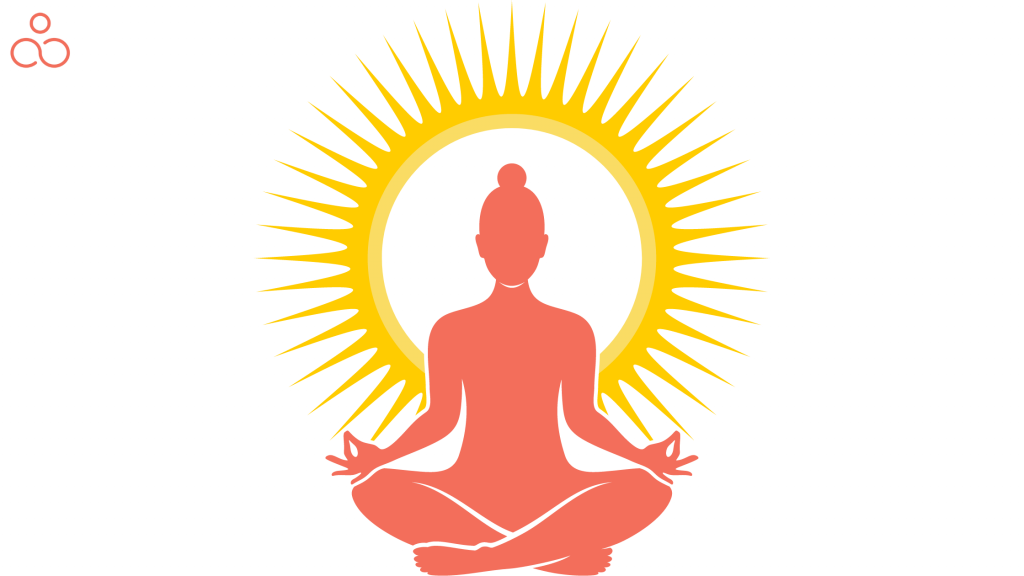
You might expect the Yoga Sutras to spell out a sequence of poses to release the body and mind, but the sole mention of asana (physical practice) in the actual text is that you should be seated comfortably. Not exactly what you’d expect from a yoga book! So, how can this text omit poses or postures if it is presenting the essence of yoga? To address this, it’s better to start with the second sutra of the first book, where Patanjali defines yoga.
Yoga is referred to as “citta vritti nirodhah.” This translates to: ‘yoga is the restraint of the mind-stuff alterations.’ Perhaps not quite what you were hoping for. This suggests that yoga is a discipline that calms the mind’s (sometimes turbulent) fluctuations. We may be able to see more precisely if we can reduce the impact of these mental disturbances or calm the turbulent, noisy nature of the thinking mind. We can build a more accurate view of the nature of reality and ourselves within it by seeing more clearly, and thus discover a more profound sense of calm.
Yoga, according to Patanjali, is a mental science. First and foremost, yoga’s origins may be traced back to psychology and philosophy before becoming a physical practice. Yoga, in its purest form, allows us to ponder profound issues about the nature of awareness. We might begin a journey away from the pressures and sufferings of daily life by learning to cultivate a certain contemplative awareness – not to the point of insanity, but with a desire to make objective observations of oneself – according to Patanjali’s yoga.
Yoga And Samkhya
Both Samkhya and Yoga are Dualistic theories that accept the distinction between Spirit (Purusha) and Matter (Karma) (Prakriti).
Redemption, which is the objective of both religions, occurs when a person is freed from the cycle of reincarnation by realizing that their Spirit is pure consciousness and so unattached to the physical world.
This is accomplished in Samkhya by a process of intellectual investigation into the nature of matter, whereas Yoga achieves the same outcome through intense meditation.
Some ancient scriptures refer to Patanjali’s Yoga as Samkhya with Ishvara. Like many Sanskrit phrases in the Yoga Sutras, the word Ishvara can be construed in several different ways.
It could be a reference to God or a master or competent teacher. Fidelity to Ishvara is one of the necessary conditions for nirvana in the Yogic system, but not in Samkhya.
Theories And Techniques Of Yoga Sutra
The Yoga Sutra of Patanjali consists of an eight-fold path known as Ashtanga, which means “Eight Limbs,” that serves as a guide to living a meaningful and purposeful life.
The Yoga Sutras are not presented in chronological order. Rather, they are placed in a wheel-like circular pattern. The profundity of each of the four ‘Padas,’ or portions, varies. The wheel of depth moves deeper and deeper through the four Padas as one proceeds on the path to spirituality, resulting in an ultimate sensation of detachment.
The path from self-realization to ultimate self-realization is long and winding. However, the feeling of calm that frees oneself from earthly ties is found in the search for the ultimate self. This never-ending trip is where one might feel a sense of perfection that cannot be found anywhere else.
The Four Chapters Of Patanjali Sutras
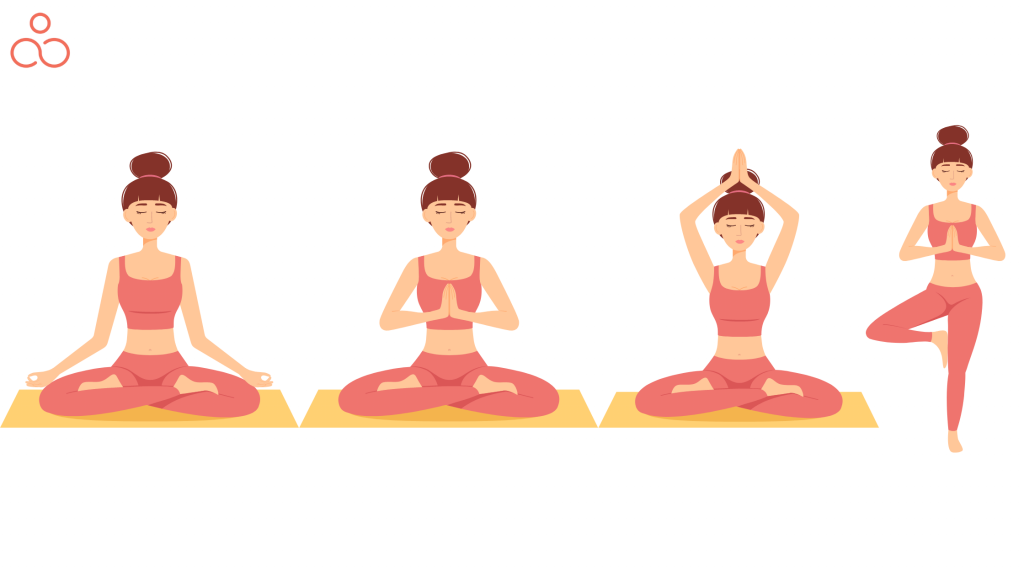
The Yoga Sutras of Patanjali are divided into the following four chapters:
1. Samadhi pada: Defines yoga but is intended to help individuals who are near to achieving samadhi, or self-realization.
2. Sadhana pada: Describes the eight stages that must be followed to progress spiritually. This chapter is written for the average individual.
Most yogis utilize the eightfold path as a guide for yogic life; therefore, it’s arguably the most essential of all the chapters. This encompasses ethical, moral behavior, asana, pranayama, sensory mastery, concentration, meditation, and self-realization, all of which are completed in this order.
3. Vibhuti Pada – The eight siddhis or supernatural powers that a yogi can obtain in the highest degrees of spiritual development are described and warned against in Vibhuti pada.
4. Kaivalya pada: Defines how to exist in the world without being influenced by the three gunas (sattva, rajas, and tamas) or energy qualities.
These four chapters, taken together, look at a person’s total development in action, thought, and speech. Patanjali’s Yoga Sutras are one of the most widely cited sources of yogic wisdom since they give the ultimate instruction manual for yoga and spiritual development.
Digging A Little More We Discover – The Eight Limbs Or The Ashtanga Concept In Yoga Sutra
1. YAMA – The yamas are a set of five ethical principles that focus on our interpersonal connections and prepare us for a peaceful living in society.
- Ahimsa is a nonviolence ethic. You avoid harming yourself or others physically, verbally, or emotionally if you practice ahimsa.
- Satya is the truth ethic. This entails speaking the truth in your words, thoughts, and actions, as well as matching your words to your actions.
- Asteya is the non-stealing ethic. This is quite self-explanatory: don’t take what isn’t yours.
- Brahmacharya is the moral code that governs how you use your sexual energy. The goal of this yama is to develop inner power, vitality, and vigor, which are necessary for advanced yogic activities.
- Aparigraha is the non-collection ethic. This yama encourages you to simply purchase what you require and discourages you from being attached to material things.
2. NIYAMA – The niyamas are a set of five precepts that focus on personal conduct and discipline. To foster spiritual progress, they encourage you to adopt a pure lifestyle and mentality.
- Saucha means “cleanliness” in Sanskrit. This refers to the purity of diet, thoughts, and environment, as well as proper hygiene.
- Santosha denotes serenity; The happiness ethic. It inspires you to be content with what you have.
- Tapas is a self-discipline philosophy. Tapas helps you build the self-discipline required to stay on the yoga path.
- Svadhyaya is the self-study ethic. This comprises spiritual instruction and research, as well as a comprehension of our life’s purpose.
- Ishvara pranidhana (full surrender to God) is a moral commitment. This practice shifts your focus from earthly concerns to your quest for self-realization.
3. ASANA – Yoga’s physical practice, known as asana, is designed to cleanse the human body and improve long-term health. In a strict sense, you strive to appreciate a steady and pleasant posture that can be maintained for a long time during meditation.
4. PRANAYAMA – Pranayama, or breath regulation, connects the three outwardly centered limbs above with the four internally centered limbs below.
To boost your life energy, you control and expand your breath using pranayama after preparing your body with asana. This prepares the mind for the next phases of yoga by clearing it of distractions and ignorance.
5. PRATYAHARA – The practice of sensory detachment is known as pratyahara. The senses must be conquered once the body and its energies are under our control. The intellect can grow on the spiritual path if it is no longer enslaved by the senses.
6. DHRANA – Dharana is the Sanskrit word for focus, and it is necessary for the following limb, meditation. Meditation is impossible to achieve without concentration. To properly concentrate, you must first develop control over your body, prana, senses, and mind.
7. DHYANA – Dhyana is a meditation technique. Meditation arises naturally as a result of an uninterrupted flow of focus. As a result, mastering dharana is required before achieving this limb.
8. SAMADHI – The hardest of the eight steps to comprehend is Samadhi. It will stay elusive until it is encountered. Samadhi is a state of meditation in which the practitioner loses self-awareness by focusing his or her attention on the object of observation.
Self-realization or illumination are two terms used to describe samadhi. The sense of “I-ness” vanishes at this point. There is no vanity, and the yogi genuinely realizes that they are one with everyone and everything around them, rather than separate from everything.
Above And Beyond The Eight Limbs
There is a phase in Patanjali’s teaching that does not appear in most modern teachings that leads to release from torture.
This condition is known as nirbija-samadhi, which is now translated as seedless contemplation, with the seeds being thoughts that produce more thoughts. While we may assume that this is the cosmic unity we connect with the completion of the eight limbs, sources clarify that the goal of Patanjali’s Yoga is the complete separation of the human spirit from the materiality of the world.
When this happens, the spirit can extend indefinitely and perform what we would consider supernatural activities.
The Yoga Sutra Today
One of the grounds that Yoga Sutras has remained classic literature is that it is based on a thorough and comprehensive study of human tendencies. And, even though life has moved on significantly since the Sutras were written, the mind’s essence remains fundamentally the same; we merely know it in different ways and other languages.
Many of the difficulties outlined in the Sutras are dealt with in clinical psychology today – cravings, addictions, compulsions, aversions, and cognitive misunderstandings, to name a few – all of which can cause considerable suffering.
So, do you think the Sutras help you enhance your yoga practice? The answer is that it is entirely up to you: if you truly desire it – with patience, devotion, and trust – it has the potential to transform your life both on and off the mat.
Wrapping Up
“Due to the strength of previous impressions, one yearns for fresh sensations. However, there is no such thing as contentment. This leads to dissatisfaction and frustration.” – BKS Iyengar.
The benefits of putting the Yoga Sutra’s precepts into practice come up in unexpected ways, with blessings of clarity and kindness. Your yoga practice is functioning here, in your interactions with people, in your moods, and in your responses to life’s challenges, so you know it’s helping you stay centered, calm, and steady.
You can respond from a place of love and trust, compassion, and non-judgment in these situations. You radiate from your core as a result of your connection to something both deep within and beyond yourself.
You will find that when you are attached to your core and acting from that place within, you can handle practically any situation with greater comfort and clarity.

